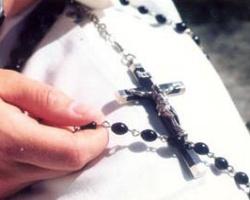The youth ministry model that rocked my world during high school—not so many years ago, or at least it doesn’t feel like it—doesn’t work with Catholic youth these days.
Teens in the Roman Catholic Church seem different, because they are, says Kris Walters, coordinator of youth ministry at Holy Trinity in Lenexa, Kansas. She credits a generational shift. There is “more of a thirst for the sacred and a search for meaning within that sacred,” said Walters.
Today’s Catholic teens want to know what our faith means, and they want it in a relevant structure. Thankfully, the church is rising up to meet the need.
Teens Want to Know Their Church
Liz Buncher, coordinator of youth ministry for the Archdiocese of St. Louis, Missouri, said teens are getting back to their roots. “Teens are beginning to cling to the traditions of our Catholic faith. While they appreciate music and your typical youth-friendly activities, they’re craving silence and contemplative prayer.”
Bob McCarty, executive director of the National Federation of Catholic Youth Ministries based in Washington, D.C., said that in today’s fast-paced culture, the Catholic message gets diffused. Teens want to know who they are as Catholics.
From Youth Groups to Youth Groupings
McCarty said there’s a change in methodology happening, “from youth groups to youth groupings.”
Young people come to the church from different economic and geographic backgrounds, cultures, time commitments, needs, interests and spiritualities, McCarty pointed out. “To think that one approach could meet those needs, I think is crazy.” He said that good youth ministry is like a cafeteria, featuring a variety of offerings to fit varying needs and schedules.
Teens, said Walters, desire to be in an authentic and intentional community. Large-scale programs are no longer where the teens are.
“I think there’s a dying of this high-energy, high-produced praise and worship event,” he said. “I think the challenge right now is trying to figure out how to transition our current structure toward a small group, small community model.”
It Takes a Parish
But a youth minister can’t do it alone. Parishes are increasing their support of youth ministry.
As a parish-based youth minister, Walters said he’s seeing a prevalence of Sunday Masses geared toward the younger generation. These Masses often include contemporary Christian worship music and a youth-focused homily. In some parishes, the first several pews are reserved for young people, and the youth group meets immediately following the Mass.
Walters also has seen an increase in full-time staff positions, one to two per parish, sometimes even three, specifically dedicated to youth ministry.
Buncher, who works to support parish youth ministers on a diocesan level, said she’s seen an increase in parishioners stepping up to volunteer to lead youth ministry programs when no full-time staff member is in place.
McCarty said that as programs shift to small-group models, youth leaders must both draw teens into the life of the community, and “mobilize the entire parish community on behalf of the young people,” he said. A youth leader can become the “orchestrator of gifts” of the community, identifying gifts of individuals and connecting them with needs.
“It’s a very exciting time to be in Catholic youth ministry,” said McCarty, who has seen the better part of two decades as a ministry volunteer.
And I’m excited to see what God does with it.




